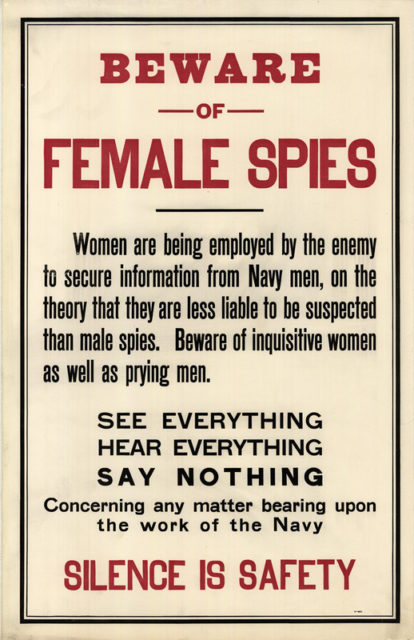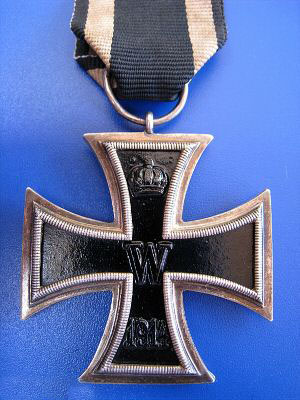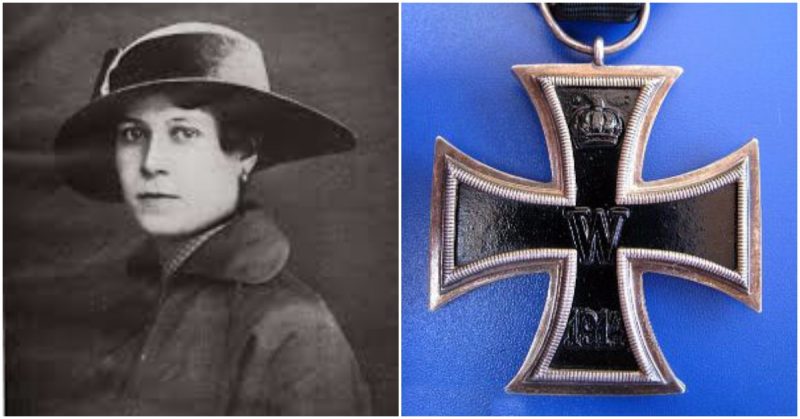During WWI, the German government condemned a woman to death for spying on them. Fortunately for her, they commuted her sentence when they realized they had given her the Iron Cross – a military medal given for acts of valor.
Marthe Mathilde Cnockaert was born on October 28, 1892, in the picturesque village of Westrozebeke, located in the Belgian province of West Flanders. Sadly, it did not stay picturesque for long.
By 1914, Cnockaert was studying medicine at the prestigious Ghent University. On July 28, WWI broke out. The Austro-Hungarian Empire invaded Serbia and formed the Central Powers which included Germany, Bulgaria, and the Ottoman Empire.
Germany invaded France, by way of Belgium. They burned Westrozebeke to the ground including the Cnockaert family home while Marthe was there on vacation. It was her father, Felix’s, fault. The Germans accused him of shooting at their troops, so he was arrested and his house burned down. The village’s surviving populace was rounded up and locked in a cellar for days. Although later released, they had nowhere to go.

Only one building still stood – a large manor house left mostly intact. Nuns from the equally devastated abbeys converted it into a military hospital to serve those they could – including both Central and Allied soldiers. Despite her lack of a degree, Cnockaert did have medical training and experience, so she agreed to help staff it.
Her mother left with others to the city of Roeselare, also in West Flanders. The family was now separated.
To the delight of the Germans, Cnockaert was fluent in English, German, French, and Flemish although she was not free from suspicion – no one was. One night, the nuns had turned on lights in an upstairs window and were suspected of sending secret messages to the Allies, so they were expelled.

Cnockaert was left with a skeleton staff to deal with hundreds of patients, requiring them to work for as long as 20 hours a day. More villagers were shot, including a few who lit fires for warmth and were also accused of sending signals. However, Cnockaert was so committed to her patients the Germans gave her an Iron Cross.
In January 1915, Allied artillery bombarded what was left of the village. The civilians were allowed to leave, and Cnockaert went to Roeselare where she was reunited with her parents. Given her background, she found work at the Roeselare German Hospital.

The following month, she was reunited with a former neighbor – Lucelle Deldonck. Deldonck had been recruited by the Anglo-Belgians to spy on the Germans. He asked Cnockaert if she would be interested in doing the same.
Her parents ran a modest café in the city, which was frequented by German soldiers and staff. It was the perfect set up. She worked with two other women, an old vegetable seller whom the Germans liked and called “Canteen Ma,” and a postal agent she called “Number 63.”
Throughout the rest of 1915, they relayed messages between the Allies and the local Belgian resistance forces. They sometimes had help from the Americans who were still neutral and whose relief goods kept the civilian populace alive.
She kept an ear out for what her patients at the hospital said, as well as the customers at her parents’ café. In the summer of 1915, she heard that the German Emperor, Kaiser Wilhelm II, was planning to visit Roeselare to prepare for an aerial attack on Britain. She forwarded this information, although nothing came of it.
By 1916, Cnockaert was no longer satisfied with simply being a message courier. British intelligence discovered that a local priest was spying on them for the Germans. He used a local telephone line to transmit his messages, so she was tasked with destroying it.
Events took a strange turn when the Germans tried to get her to spy for them. She and her family were living in a house that took in refugees from the countryside, and included was a German civilian she identified only as Otto.
As Cnockaert had an Iron Cross and was a trusted staff member at the hospital, Otto believed she was sympathetic to the Central Power’s cause. He asked her to be one of his spies. She told her handlers who advised her to play along so as not to arouse suspicion.

They arranged for her to relay seemingly valuable information that did not compromise the Allies in any way. Eventually, it became too much for her. Worse, Otto was starting to believe she was interested in him sexually. She informed her handlers who had him shot.
In the autumn of 1916, she made an important discovery – an abandoned sewer tunnel that ran beneath the German ammunition depot. Ordered to blow it up, she and another agent named Alphonse placed dynamite at just the right spot to do that.
Unfortunately, she dropped her watch while doing so and her initials were engraved on it. The depot was not blown up, but Cnockaert’s cover had been blown.
She was caught in November and sentenced to death for espionage. She refused to betray her comrades. Fortunately, her Iron Cross came to her rescue. As she had done so much for German soldiers and civilians, they instead sentenced her to life in the Ghent prison.
Even more fortunate, Germany surrendered in 1918, so she only served two years. She was commended by Field Marshal Sir Douglas Haig for her services and received several awards.
She later married British Army Officer John McKenna and published her first memoir, “I Was a Spy,” in 1932. It is believed her husband wrote it under her name. That book included an introduction by Sir Winston Churchill and more books eventually followed.
